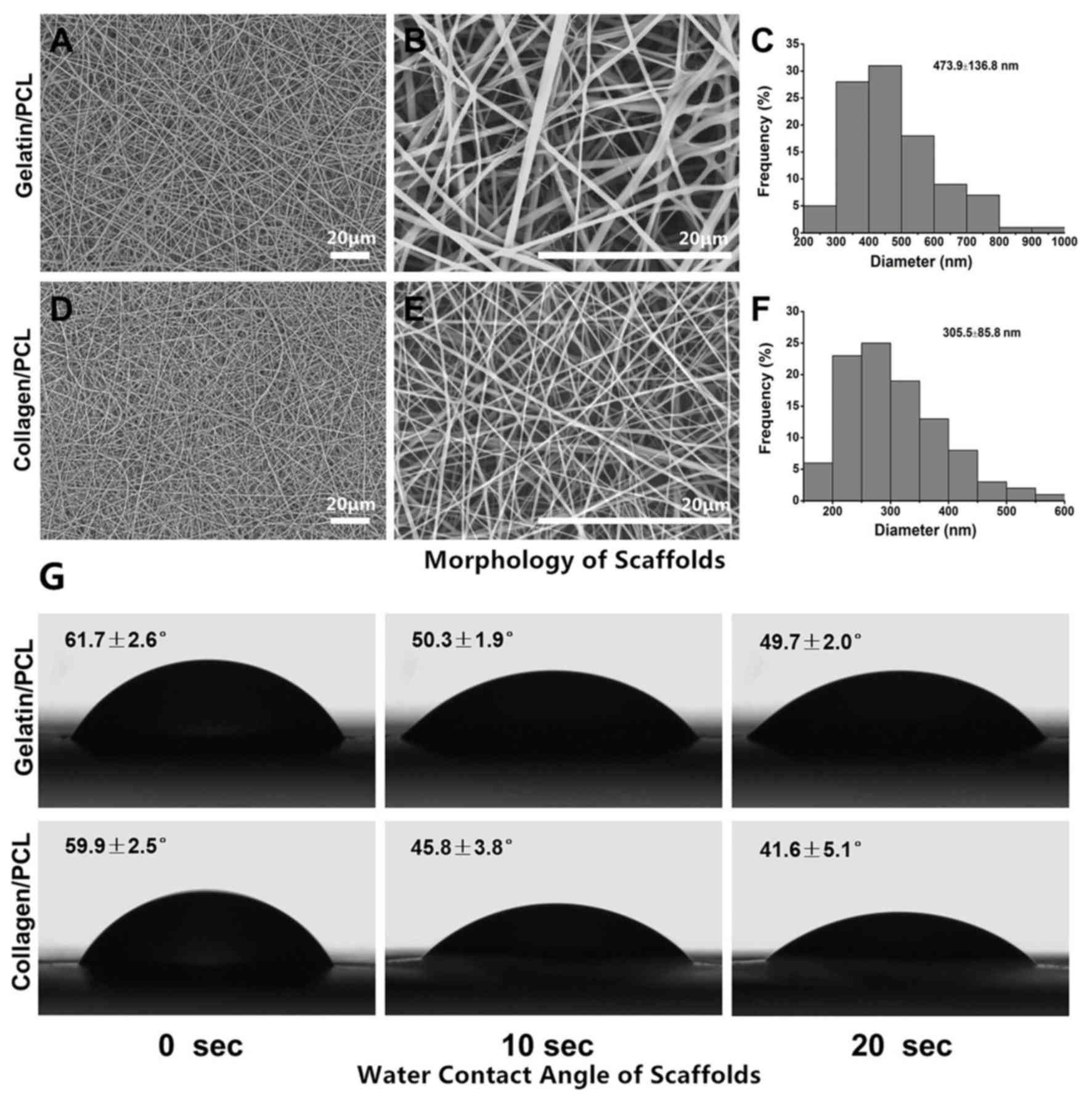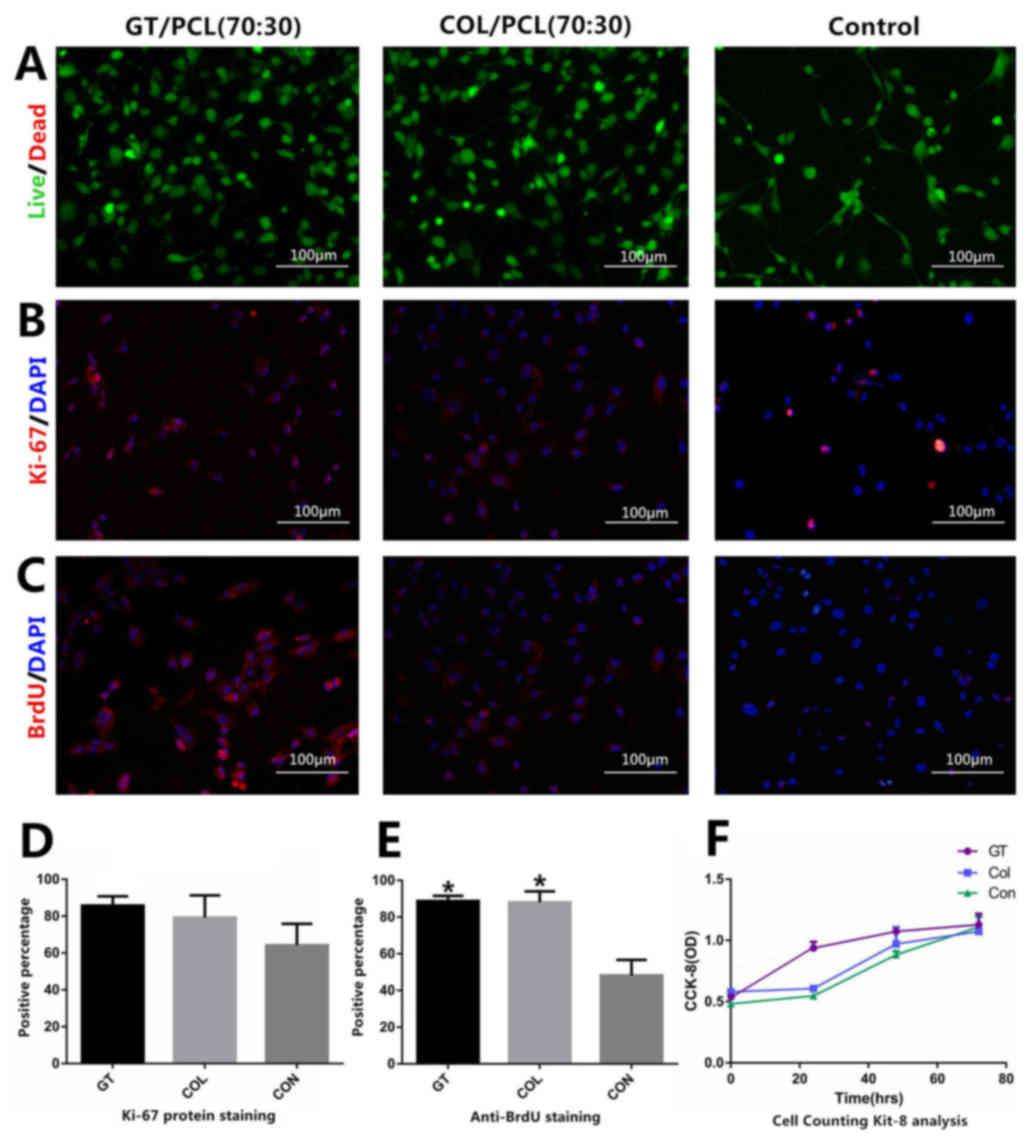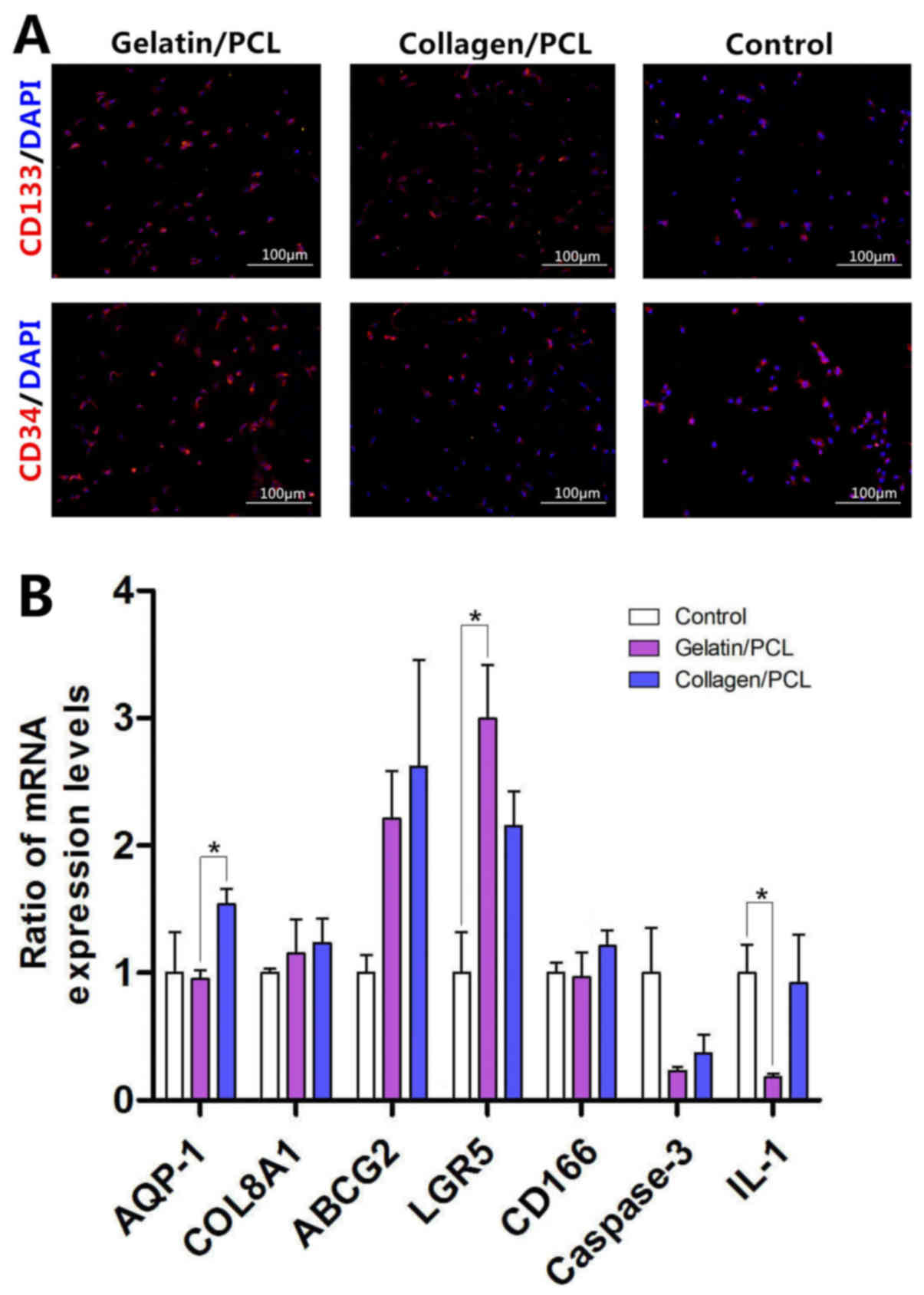|
1
|
Bourne WM, Nelson LR and Hodge DO: Central
corneal endothelial cell changes over a ten-year period. Invest
Ophthalmol Vis Sci. 38:779–782. 1997.PubMed/NCBI
|
|
2
|
Peh GS, Beuerman RW, Colman A, Tan DT and
Mehta JS: Human corneal endothelial cell expansion for corneal
endothelium transplantation: An overview. Transplantation.
91:811–819. 2011. View Article : Google Scholar : PubMed/NCBI
|
|
3
|
Navaratnam J, Utheim TP, Rajasekhar VK and
Shahdadfar A: Substrates for expansion of corneal endothelial cells
towards bioengineering of human corneal endothelium. J Funct
Biomater. 6:917–945. 2015. View Article : Google Scholar : PubMed/NCBI
|
|
4
|
Joyce NC: Proliferative capacity of the
corneal endothelium. Prog Retin Eye Res. 22:359–389. 2003.
View Article : Google Scholar : PubMed/NCBI
|
|
5
|
Proulx S and Brunette I: Methods being
developed for preparation, delivery and transplantation of a
tissue-engineered corneal endothelium. Exp Eye Res. 95:68–75. 2012.
View Article : Google Scholar : PubMed/NCBI
|
|
6
|
Bashur CA, Dahlgren LA and Goldstein AS:
Effect of fiber diameter and orientation on fibroblast morphology
and proliferation on electrospun poly(D,L-lactic-co-glycolic acid)
meshes. Biomaterials. 27:5681–5688. 2006. View Article : Google Scholar : PubMed/NCBI
|
|
7
|
Xu C, Inai R, Kotaki M and Ramakrishna S:
Electrospun nanofiber fabrication as synthetic extracellular matrix
and its potential for vascular tissue engineering. Tissue Eng.
10:1160–1168. 2004. View Article : Google Scholar : PubMed/NCBI
|
|
8
|
Li WJ, Laurencin CT, Caterson EJ, Tuan RS
and Ko FK: Electrospun nanofibrous structure: A novel scaffold for
tissue engineering. J Biomed Mater Res. 60:613–621. 2002.
View Article : Google Scholar : PubMed/NCBI
|
|
9
|
Chew SY, Wen J, Yim EK and Leong KW:
Sustained release of proteins from electrospun biodegradable
fibers. Biomacromolecules. 6:2017–2024. 2005. View Article : Google Scholar : PubMed/NCBI
|
|
10
|
Liu Y, Ren L and Wang Y: Crosslinked
collagen-gelatin-hyaluronic acid biomimetic film for cornea tissue
engineering applications. Mater Sci Eng C Mater Biol Appl.
33:196–201. 2013. View Article : Google Scholar : PubMed/NCBI
|
|
11
|
Wang K, Chen X, Pan Y, Cui Y, Zhou X, Kong
D and Zhao Q: Enhanced vascularization in hybrid PCL/gelatin
fibrous scaffolds with sustained release of VEGF. Biomed Res Int.
2015:8650762015.PubMed/NCBI
|
|
12
|
Hosseini Y, Agah M and Verbridge SS:
Endothelial cell sensing, restructuring, and invasion in collagen
hydrogel structures. Integr Biol (Camb). 7:1432–1441. 2015.
View Article : Google Scholar : PubMed/NCBI
|
|
13
|
Ye J, Wang J, Zhu Y, Wei Q, Wang X, Yang
J, Tang S, Liu H, Fan J, Zhang F, et al: A thermoresponsive
polydiolcitrate-gelatin scaffold and delivery system mediates
effective bone formation from BMP9-transduced mesenchymal stem
cells. Biomed Mater. 11:0250212016. View Article : Google Scholar : PubMed/NCBI
|
|
14
|
Zhang Y, Ouyang H, Lim CT, Ramakrishna S
and Huang ZM: Electrospinning of gelatin fibers and gelatin/PCL
composite fibrous scaffolds. J Biomed Mater Res B Appl Biomater.
72:156–165. 2005. View Article : Google Scholar : PubMed/NCBI
|
|
15
|
Tillman BW, Yazdani SK, Lee SJ, Geary RL,
Atala A and Yoo JJ: The in vivo stability of electrospun
polycaprolactone-collagen scaffolds in vascular reconstruction.
Biomaterials. 30:583–588. 2009. View Article : Google Scholar : PubMed/NCBI
|
|
16
|
McKenna KA, Hinds MT, Sarao RC, Wu PC,
Maslen CL, Glanville RW, Babcock D and Gregory KW: Mechanical
property characterization of electrospun recombinant human
tropoelastin for vascular graft biomaterials. Acta Biomater.
8:225–233. 2012. View Article : Google Scholar : PubMed/NCBI
|
|
17
|
Han F, Jia X, Dai D, Yang X, Zhao J, Zhao
Y, Fan Y and Yuan X: Performance of a multilayered small-diameter
vascular scaffold dual-loaded with VEGF and PDGF. Biomaterials.
34:7302–7313. 2013. View Article : Google Scholar : PubMed/NCBI
|
|
18
|
Yin A, Zhang K, McClure MJ, Huang C, Wu J,
Fang J, Mo X, Bowlin GL, Al-Deyab SS and El-Newehy M:
Electrospinning collagen/chitosan/poly(L-lactic
acid-co-ε-caprolactone) to form a vascular graft: Mechanical and
biological characterization. J Biomed Mater Res A. 101:1292–1301.
2013. View Article : Google Scholar : PubMed/NCBI
|
|
19
|
Chen J, Yan C, Zhu M, Yao Q, Shao C, Lu W,
Wang J, Mo X, Gu P, Fu Y and Fan X: Electrospun nanofibrous SF/P
(LLA-CL) membrane: A potential substratum for endothelial
keratoplasty. Int J Nanomedicine. 10:3337–3350. 2015.PubMed/NCBI
|
|
20
|
Shao C, Fu Y, Lu W and Fan X: Bone
marrow-derived endothelial progenitor cells: A promising
therapeutic alternative for corneal endothelial dysfunction. Cells
Tissues Organs. 193:253–263. 2011. View Article : Google Scholar : PubMed/NCBI
|
|
21
|
Shao C, Chen J, Chen P, Zhu M, Yao Q, Gu
P, Fu Y and Fan X: Targeted transplantation of human umbilical cord
blood endothelial progenitor cells with immunomagnetic
nanoparticles to repair corneal endothelium defect. Stem Cells Dev.
24:756–767. 2015. View Article : Google Scholar : PubMed/NCBI
|
|
22
|
Feng B, Tu H, Yuan H, Peng H and Zhang Y:
Acetic-acid-mediated miscibility toward electrospinning homogeneous
composite nanofibers of GT/PCL. Biomacromolecules. 13:3917–3925.
2012. View Article : Google Scholar : PubMed/NCBI
|
|
23
|
Yoeruek E, Saygili O, Spitzer MS, Tatar O,
Bartz-Schmidt KU and Szurman P: Human anterior lens capsule as
carrier matrix for cultivated human corneal endothelial cells.
Cornea. 28:416–420. 2009. View Article : Google Scholar : PubMed/NCBI
|
|
24
|
Goddard JM and Joseph JH: Polymer surface
modification for the attachment of bioactive compounds. Progr
Polymer Sci. 32:698–725. 2007. View Article : Google Scholar
|
|
25
|
Duan H, Feng B, Guo X, Wang J, Zhao L,
Zhou G, Liu W, Cao Y and Zhang WJ: Engineering of epidermis skin
grafts using electrospun nanofibrous gelatin/ polycaprolactone
membranes. Int J Nanomedicine. 8:2077–2084. 2013.PubMed/NCBI
|
|
26
|
Fu W, Liu Z, Feng B, Hu R, He X, Wang H,
Yin M, Huang H, Zhang H and Wang W: Electrospun gelatin/PCL and
collagen/PLCL scaffolds for vascular tissue engineering. Int J
Nanomedicine. 9:2335–2344. 2014. View Article : Google Scholar : PubMed/NCBI
|
|
27
|
Wang Y, Zhang W, Yuan J and Shen J:
Differences in cytocompatibility between collagen, gelatin and
keratin. Mater Sci Eng C Mater Biol Appl. 59:30–34. 2016.
View Article : Google Scholar : PubMed/NCBI
|
|
28
|
Engelmann K, Drexler D and Böhnke M:
Transplantation of adult human or porcine corneal endothelial cells
onto human recipients in vitro. Part I: Cell culturing and
transplantation procedure. Cornea. 18:199–206. 1999. View Article : Google Scholar : PubMed/NCBI
|
|
29
|
Engelmann K, Bednarz J and Bohnke M:
Endothelial cell transplantation and growth behavior of the human
corneal endothelium. Ophthalmologe. 96:555–562. 1999.(In German).
View Article : Google Scholar : PubMed/NCBI
|
|
30
|
Engelmann K, Bohnke M and Friedl P:
Isolation and long-term cultivation of human corneal endothelial
cells. Invest Ophthalmol Vis Sci. 29:1656–1662. 1988.PubMed/NCBI
|
|
31
|
Tan DT, Anshu A and Mehta JS: Paradigm
shifts in corneal transplantation. Ann Acad Med Singapore.
38:332–338. 2009.PubMed/NCBI
|
|
32
|
Hirata-Tominaga K, Nakamura T, Okumura N,
Kawasaki S, Kay EP, Barrandon Y, Koizumi N and Kinoshita S: Corneal
endothelial cell fate is maintained by LGR5 through the regulation
of hedgehog and Wnt pathway. Stem Cells. 31:1396–1407. 2013.
View Article : Google Scholar : PubMed/NCBI
|
|
33
|
Okumura N, Nakamura T, Kay EP, Nakahara M,
Kinoshita S and Koizumi N: R-spondin1 regulates cell proliferation
of corneal endothelial cells via the Wnt3a/β-catenin pathway.
Invest Ophthalmol Vis Sci. 55:6861–6869. 2014. View Article : Google Scholar : PubMed/NCBI
|
|
34
|
Holland JD, Klaus A, Garratt AN and
Birchmeier W: Wnt signaling in stem and cancer stem cells. Curr
Opin Cell Biol. 25:254–264. 2013. View Article : Google Scholar : PubMed/NCBI
|













